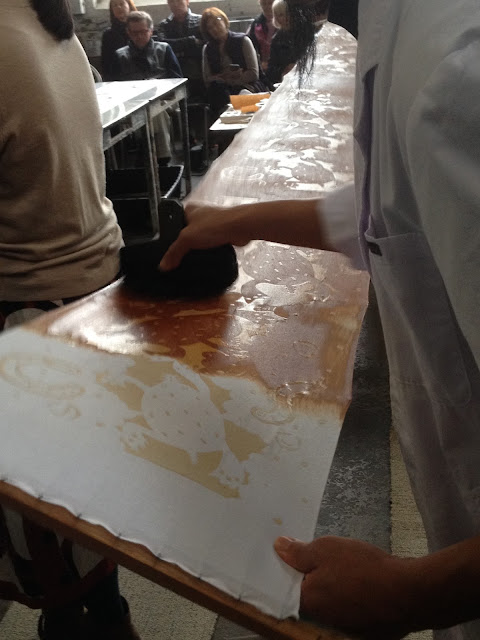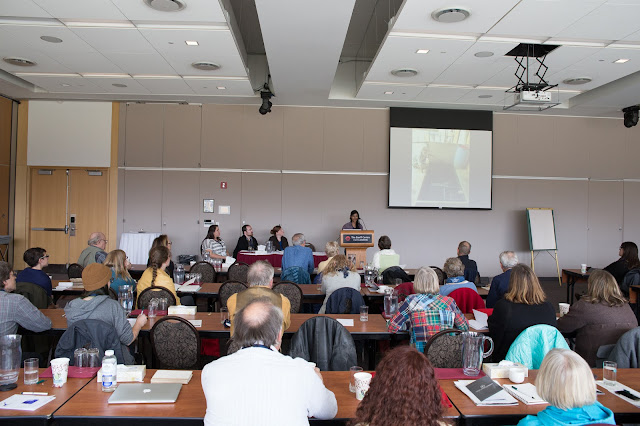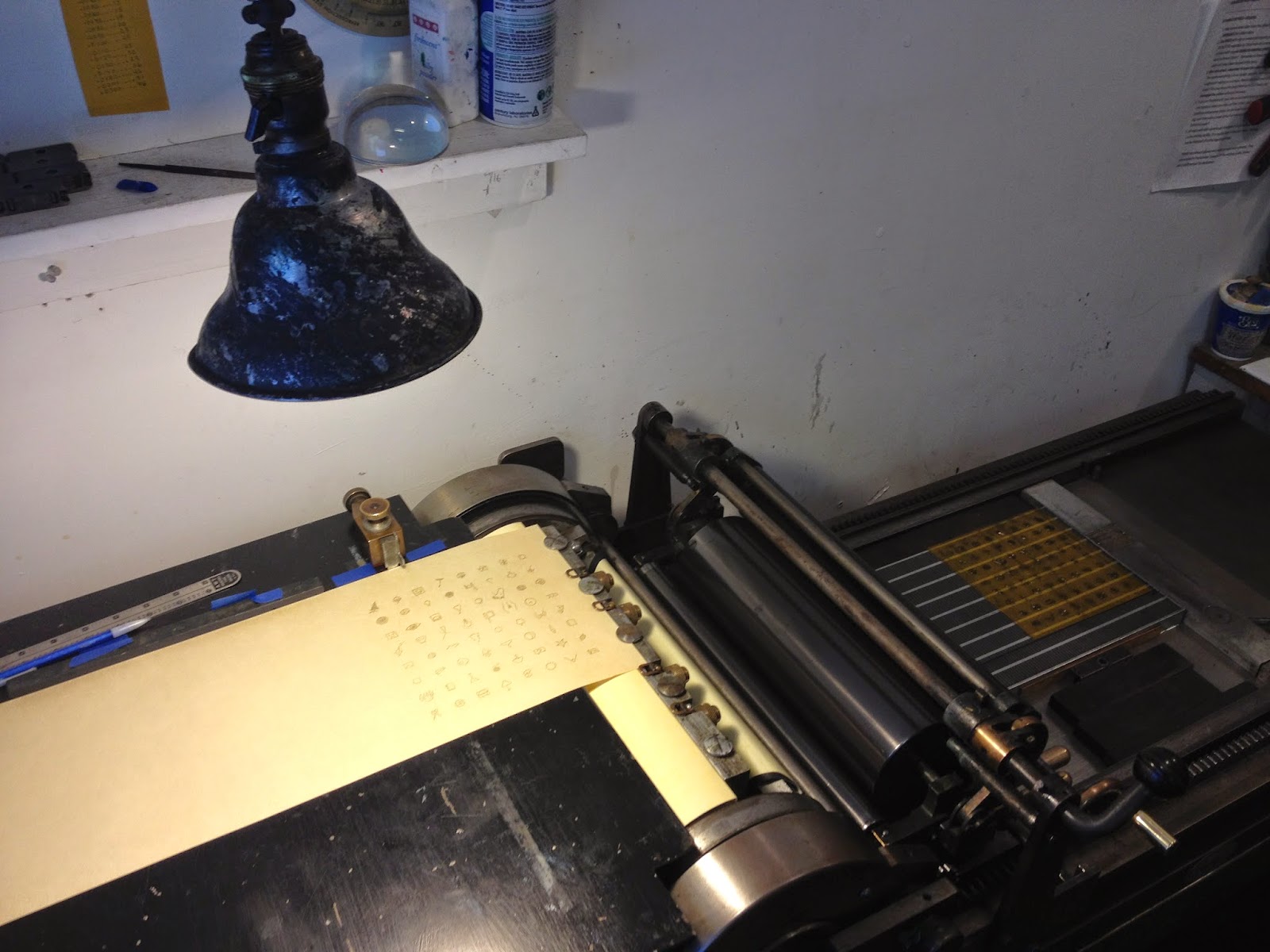This week at the Morgan Conservatory I was lucky enough to attend and witness a traditional method of stenciling by hand on paper and cloth. The method is called Katazome, and it was demonstrated by two talented Katazome artists, Chie Takai and Takeshi Matsunaga, who go by Kata-Kata. They visited Cleveland especially for this event all the way from Japan. As I watched them work, I realized that I was witnessing one of those things you would never have the chance to see unless you went to Japan.
The resist is a combination of rice cake flour and rice bran mixed together
and then steamed to make a paste that is then applied.
The paste is pushed through a stencil. The stencil was traditionally made using 3 layers of persimmon dyed washi laminated with a fine gauze covered in lacquer. Before gauze, people would embed silk threads in between each sheet of washi to provide the structural integrity needed to use the piece as a stencil. and then steamed to make a paste that is then applied.
After a few passes, the paste looks even on the surface of the cloth.
The stencil is then carefully listed off the cloth to be replaced on another part of the cloth, with perfect registration.
The cloth is stretched out using two wooden frames on either side, with nails. An elegant design, made by hand.
These bamboo 'stretchers' are also handmade. They have thin pins that protrude from the ends. The length of the bamboo is longer that the width of the piece of cloth to be stretched.
Another elegant and simple solution.
The cloth is then suspended between two poles, and left to dry overnight.
The next day, dye was brushed onto this cloth, pretty vigorously. The dye which was used was mixed with nori or seaweed, which what I understood, prevented the dye from seeping through to the other side of the cloth.
Katazome on paper is slightly different. The rice paste is stenciled onto paper. The paper is usually made from Kozo and treated with Kon'nyaku to give it wet strength. It is also taped down to prevent warping.
I failed to tape mine down securely overnight and it warped and cracked. It relaxed after I spritzed it though, and was just fine. This is one the Kata-Kata stencils of a bear holding a salmon, which I was lucky enough to try my hand at stenciling.

The pigment that was used was powder which was mixed with soy milk, which of course was made from scratch.
Soy beans were soaked overnight, and then pulverized in a blender and strained to produce the milk. This was mixed in with the pigment to act as the protein binder for application on paper.
The pigment can then be brushed onto the paper carefully and left to dry for half an hour between applications of colour. For rich colours, layers of pigment can be applied.
It doesn't look like much when its drying. After it is completely dry, it needs to be ironed for a few minutes on the back. This helps the colour set. When working with cloth, the cloth is steamed in a chamber to help the colour set.
The paper and/or cloth are then soaked overnight in water. The rice paste just washes away and leaves a beautiful print behind! Be sure to check out the Kata-Kata website and blog!























































